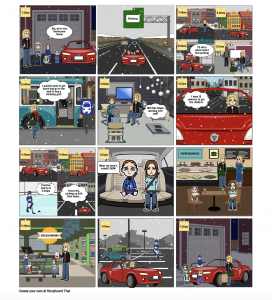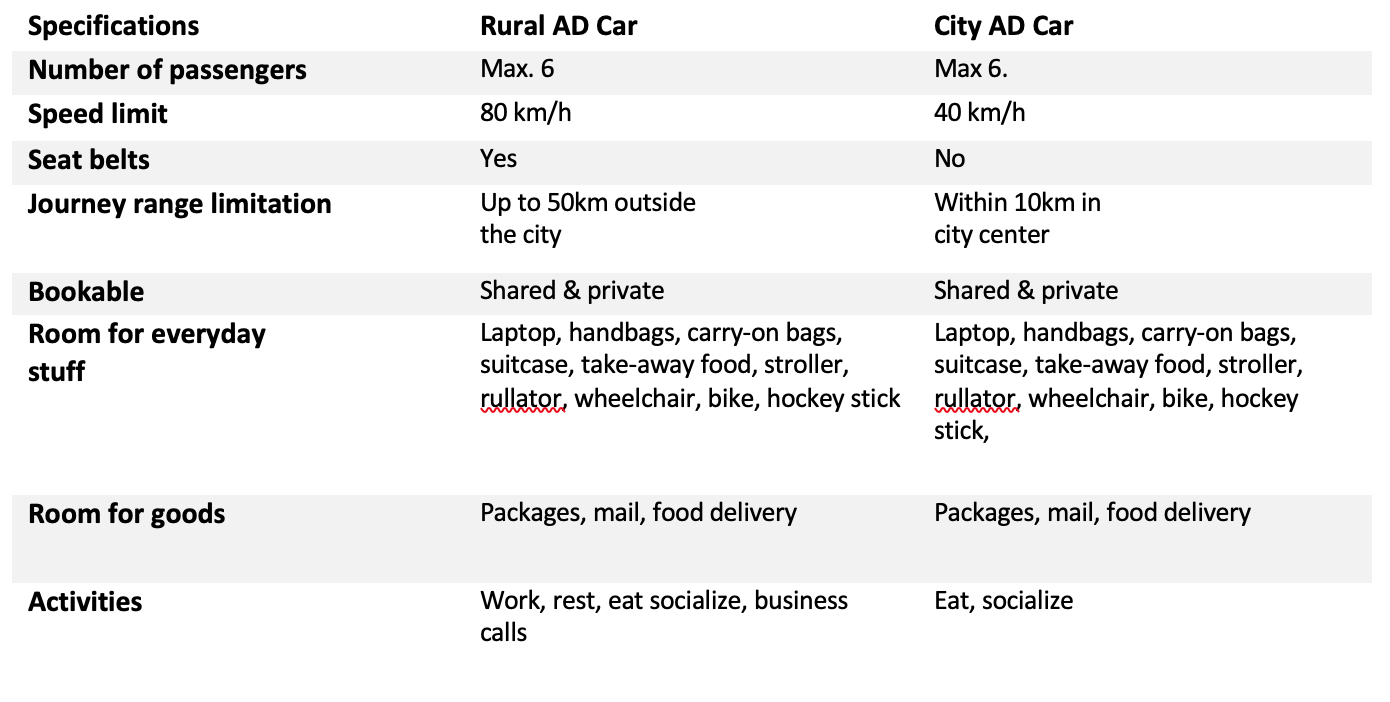This interactive workshop explored new directions and conceptual solutions for user experience and interaction design in relation to Autonomous Vehicles (AVs) and Mobility as a Service (MaaS). A set of urban planning principles were developed and defined together in Urban workshop out of which three were selected to guide the workshop: social inclusiveness, increased health and well-being and shared mobility. Ethnographic insights from AHA’s first work-package were used to center the workshop around a family’s everyday car commute. The overall question was set to explore how the family could reduce its daily private car use. The workshop was divided into four stations.

Workshop participants were asked to design an infrastructure system, two types of transportation vehicles and a service that connects all mobility options, making it easier to change from the Rural to the City car. Most of the trigger materials were common across all stations apart from the City backdrop that was the starting point for the City station. Requirement cards enabled the workshop to be interactive because they provided four directional communication among the stations. They either disrupted or stimulated the group discussions by giving it a new perspective. Each station nominated a contact person who delivered the card to other stations.
All stations worked with the same comic board that was put together to condense ethnographic insights into a single commute journey. The comic strip visualised a single mother and her three children’s’ day of commute. The mother on her way to work needed to take the children to school and nursery, and on the way home, to hockey practice and grocery shopping. The thumbnails were designed to help workshop participants not to lose sight of the commuter, and also, to keep the discussion focused on the pre-set urban planning principles throughout the day. In addition, and also based on the ethnographic insights, each stations received a set of station-specific pain point board. These boards listed existing pain points to help identify opportunities and ideate new concepts for designing a better commute.


The City station worked on developing a fictional city called Flexborg, that is well fit for shared autonomous vehicles. To rethink existing infrastructures, the station was given a city backdrop that outlined a blank city map with few fixed infrastructure elements such as the hospital, the airport or the school. A mobility hub and the transport system needed to be planned out during the day.
The City and Rural Car stations started the day by defining limitations and use cases of the car they were designing for based on the car specifications in the table below. Additionally, they worked together to develop ideas and design opportunities that would contribute to increased health, active mobility and help the family choose the service cars instead of their own car.

Physical scenes and props were used in the form of everyday objects (strollers, sport equipment, luggage, shopping bags etc.) to spark ideas and identify design opportunities.

At the start, the service station was part of the City, Rural and City Car stations to collect insights on the emerging, station-specific service needs. In the afternoon, the Mobility Service station listed and grouped station-specific services. Interestingly, most of the service ideas were connected to making the logistics for the commuting easier: a laundry service that takes away and washes kids’ sport clothes directly from the sport center; intelligent food delivery service to optional location including mobility hubs or rural car service for teenagers.
The workshop discussions noted some common themes and concerns across all stations throughout the day such as separation of goods and services, privacy, or safe transportation of children.


Sketches on the separation of goods and service from the Rural Car Station

After an exciting and long day of workshop

